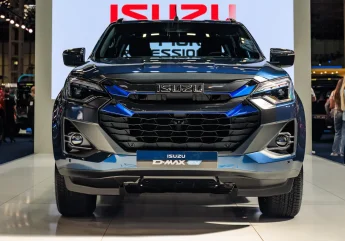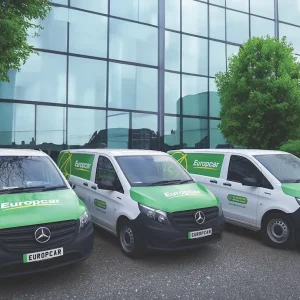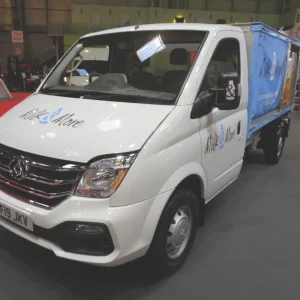
In an overall new LCV market that is feeling the pressure from tough economic conditions, the pick-up sector has been particularly hard hit due to long-standing tax breaks being withdrawn from double-cab models, which are now treated as passenger cars for benefit in kind (BIK) and capital allowance purposes. High-emission diesel trucks have borne the brunt of the changes.
According to the Society of Motor Manufacturers and Traders, pick-up sales fell 26% year-on-year in August to 1,140, the fourth consecutive month of decline. The sector remained 5% up during the first seven months of the year, however, with registrations of 23,839.
While no pick-up trucks featured in the top 10 sellers list for the month of August, the Ford Ranger was the third best-selling LCV in the year-to-date on 11,247 units.
In June Ford launched its petrol/electric Ranger PHEV, which it expects to account for one in five Ranger sales. It claims the hybrid version incurs BIK fees of £350 a month, compared to £700 for a diesel truck. In terms of workhorse credentials and off-road ability, the Ranger PHEV promises to be able to stand shoulder to shoulder with its diesel counterparts. Pure electric trucks have, so far at least, proven less convincing but the market continues to evolve.
The next manufacturer set to enter the fray is Isuzu with its D-Max EV. Order books will open this year with customer deliveries expected to begin in March 2026. Unlike earlier electric pickups, like the Maxus T90, the Isuzu will be four rather than two-wheel drive.
It will also offer a payload of over 1t, and a maximum 3.5t towing capacity. The D-Max EV will feature two electric motors, with a combined output of 190hp and 325Nm of torque, and a 66.9kWh battery, allowing a range of 163 miles on the WLTP cycle.
The model features a 210mm ground clearance, which allows it to achieve a claimed water wading depth of up to 600mm. All-new De-Dion rear suspension is said to deliver improved handling.
The D-Max EV will be available with a choice of extended-cab and double-cab bodystyles, and with trim levels equivalent to the DL40 and V-Cross specs offered with the diesel range.
Prices, excluding VAT, start at £59,995 for an eDL40 extended cab, and rise to £60,995 for an eDL40 double cab and £62,495 for an eV-Cross double cab.
Due to the prevailing market trends, it would seem to be a strange time to launch a diesel-powered pick-up truck but that is what Chinese brand GWM has done.
The manufacturer, which previously sold trucks here as Great Wall, says its new POER300 features a 2.4-litre, 183hp diesel engine, with 480Nm of torque, and combined fuel economy of 32.7mpg. It comes with nine-speed automatic transmission, and a full-time four-wheel drive system with low-range capability.
The truck has a 1t payload, and a towing capacity of 3.5t. It is offered in three specification grades, Lux, Ultra and Vanta, with prices, excluding VAT, starting at a bargain basement price of £31,495.
Isuzu is well known for offering accessories with its D-Max range, and in partnership with ARB has introduced a roof tent for the pickup. Isuzu says the Altitude tent features electric automated open and close functionality, panoramic 360-degree views, premium materials and storage solutions.
Meanwhile, in July, Isuzu began UK sales for the latest AT35 version of its D-Max, which is developed in collaboration with Arctic Trucks to extreme off-roading specification. Features include 35in BFGoodrich KO2 all-terrain tyres, an Arctic Trucks Bilstein performance suspension system, a Rough Terrain Mode, a shift-on-the-fly four-wheel drive system and a rear differential lock. The model retains the usual D-Max 1.9-litre diesel engine, and has a 3.5t towing capacity and payload of over 1t.
Alongside the pick-up sector the market for 4×4 LCVs continues to bob along, serving those who need off-road access but not necessarily a 1t payload or, in the case of double-cabs, seating for five people. Sales in the first seven months of the year in this niche segment reached 4,661, down 5% compared to the same period in 2024 but new models offer potential for growth.
Toyota says UK sales of its new Land Cruiser Commercial, which went on sale in August, are restricted to an allocation of 500 units a year. A 2.8-litre four-cylinder diesel engine powers the Land Cruiser Commercial and Toyota says the powertrain will be upgraded to incorporate its Hybrid 48V mild hybrid system before the end of the year. The vehicle offers a 3.5t towing capacity, a payload of up to 820kg and a 2.0m3 load space. It is available as a single model, priced just under £52,000, excluding VAT.
Another 4WD car-derived van arriving on the market is the KGM (formerly Ssangyong) Rexton Commercial. A cheaper option than the Land Cruiser, it is priced from £34,995, excluding VAT. The base Rexton car is a large, seven-seater SUV, with the fifth-generation model having been introduced in 2021 and updated earlier this year. The Rexton Commercial sees the car’s rear rows of seats removed, and a mesh bulkhead installed. The rear side door windows are blacked out, but the doors themselves remain to offer a side access point to the 2.2m3 load bay, which is also accessible via the (electrically powered) rear tailgate. The Rexton Commercial’s payload is 700kg. It comes with a single powertrain – a 2.2-litre diesel engine, with 202hp and 441Nm of torque, paired with an eight-speed automatic gearbox.





